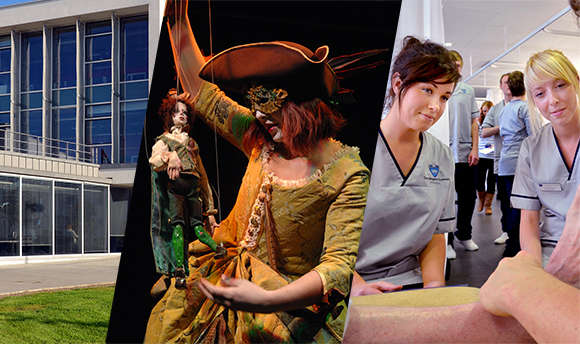Fire Safety Policy
The Fire Safety policy provides guidance on how fire safety will be managed and implemented across the University.
| Fire Safety Policy 2023 - 2026 | |
|---|---|
| Policy Summary: | The Fire Safety Policy describes how Queen Margaret University will comply with its statutory responsibilities under the Fire (Scotland) Act 2005, Fire (Scotland) Regulations 2006 and associated regulations / approved codes of practice. |
| Policy Owner: | Mike Kennedy Health, Safety & Wellbeing Manager |
| Approved by: | Health and Safety Committee |
| Consultation Completed: | Completed |
| Equality Impact Assessed: | To be completed |
| Date of issue: | 28.03.2024 |
| Review Period: | December 2026 (or, where changes in legislation or best practice deem otherwise) |
The Court of Queen Margaret University is committed to this institution’s purpose of helping to create a better society through education, research and innovation, and providing a supportive and creative learning environment in which students and staff thrive. This commitment includes the effective management of health and safety within QMU.
The Court accepts its responsibilities as an employer for ensuring, so far as is reasonably practicable, the safety of staff, students and others who may be affected, in respect of harm caused by fire in the workplace. This specific policy supports (and has the same force as) the current overarching Health and Safety Policy.
The Court recognises that effective and efficient fire safety management can contribute to organisational performance by eliminating or reducing unnecessary risks and liabilities. To facilitate this, the Court will create and promote a positive fire safety culture that secures the commitment and participation of all staff and students to help achieve, maintain, and develop high standards of fire safety on the Queen Margaret University campus.
Specifically, the Court shall:
Provide
- Premises which are constructed and maintained with fire safety measures (active and passive fire protection) of an appropriate standard.
- Adequate means of escape.
- Adequate means for fighting fire and for giving warning in the event of fire.
Ensure
- Appropriate procedures for serious and imminent danger from fire and for danger areas.
- Provision of information to employees, contractors, and visitors to the University.
- Appropriate training to employees.
- The elimination or reduction of risks from dangerous substances.
- The maintenance of measures provided for the protection of fire-fighters.
Undertake
- Suitable and sufficient fire risk assessments of all University buildings to assess the risks to the occupants from fire and to implement and analyse the adequacy of fire safety measures.
Periodically test, monitor, and audit all fire safety systems and procedures to ensure
- Continuous and planned improvement.
- The application of corrective and preventative actions based on monitoring, auditing and investigating activities.
As Principal of the University, I am authorised to ensure that this policy is implemented effectively throughout the institution. The policy (and the associated approved Fire Safety Management document) applies to all persons, premises and activities falling, to any extent, under the University’s control, whether at home or abroad.
I call on your support in ensuring that this policy is implemented and adhered to as appropriate, helping to keep everyone safe. Thank you.
Principal and Vice-Chancellor, Sir Paul Grice.
December 2023.
1. Introduction
The effective management of fire safety within Queen Margaret University is critical to the health, safety and wellbeing of all who work, study and visit this campus and the ability of Queen Margaret University to discharge its primary duty of care under statute and as a safe place of learning, business and research.
This is made more critical when considering its overall risk profile - fire occurring within the main academic building (the principal building asset) has the potential to compromise a large proportion of learning, research and professional services functions of Queen Margaret University and its overall ability to function as a University.
In recognition of the above, Queen Margaret University occupies a portfolio of modern buildings built to high fire safety / protection standards underpinned, in part, by advanced fire engineering modelling. Its suite of buildings include:
- Main academic building [hosting library, research, teaching, and professional services activity].
- Sports complex/drama facility/QMU students’ union building.
- Energy Centre.
- Drama set construction.
- Groundkeeper facilities.
- Student residential accommodation [9 units, including management suite].
To achieve effective fire safety management, it is essential to develop and maintain a strategy that links the active and passive fire safety systems throughout the QMU estate with the appropriate response (human behaviours) of all occupants to fire, fire alarm and evacuation.
This policy outlines Queen Margaret University’s collective strategy in response to the hazard of fire within the campus.
2. Scope
This Fire Safety Policy (and associated approved guidance note) applies to all premises (including temporary structures, i.e., marquees, etc.) and activities falling, to any extent, under the University’s control.
The policy sets down a framework by which the University and all members of the campus community, visitors and contractors will be able to meet their fire safety duties.
3. QMU Fire Risk Profile
All premises occupied and operated by Queen Margaret University have undergone full fire risk assessment, as defined in the Fire Safety (Scotland) Regulations 2006, by competent consultants. These assessments reflect, in part, the nature and use of the building, population types, fire safety measures (both passive and active protective measures) and the emergency evacuation and management procedures in place. Where weaknesses are identified by internal monitoring/audit/review process, action points/further control measures will be determined and completed to ensure the robustness of the QMU community’s collective response to fire.
QMU Campus is purpose-built and incorporates, in part, the most recent advances in fire engineering technology/smoke modelling to ensure that occupants of the buildings can escape safely in the event of fire or fire alarm.
The areas designated as the highest fire risk are typical in such educational establishments – catering facilities, laboratories, sleeping risk, etc. and the activities surrounding the use of third-party contractors. The QMU energy centre facility (a remote distinct building on the campus) supplies heat to campus buildings and thus fire risk from this source is absent from many campus structures.
The Campus is a ‘no smoking’ zone with a designated smoke shelter in place.
Fire risk from electrical malfunction is addressed through full compliance with the Electricity at Work Regulations 1989 by the operation of a regular portable appliance testing regime alongside periodic fixed wire electrical installation inspection and testing.
Queen Margaret University’s risk profile also extends beyond person and asset safety to business resilience. The Main Building facility incorporates most of the corporate and academic functions of the University and a catastrophic loss of this facility due to fire has the potential to effectively reduce the ability of Queen Margaret University to discharge its obligations. To reflect the importance of this risk exposure, business resilience/continuity now features within this policy document and guidance note.
It is essential that the QMU community, collectively, aspires to the highest standards of fire safety to protect both the people and as a place of research and learning.
4. QMU Fire Strategy
The QMU Campus comprises a portfolio of buildings built to modern building standards. The main academic building, due to its complex architectural design, incorporates advanced fire engineering to control the flow of smoke from fire within the atrium area and throughout the building. This control system was detailed in the original building specification and became a condition of build and, as a consequence, any deviation/modification in building use or structure can only be sanctioned with permission from the local planning/building and fire authorities.
To support the advanced nature of these operational active and passive fire control measures is a fire strategy, partly outlined in this policy and supplemented by an authorised Fire Safety Management document. This document describes in detail the way the University community will manage a fire event and evacuation, taking into account vulnerable persons and visitors/contractors in QMU buildings.
Completing the overall strategy is a comprehensive suite of fire risk assessments that detail the overall fire assessment rating, survey findings and analysis and remedial actions to ensure that Queen Margaret University is an organisation fully aware and ready to respond appropriately to a fire event or emergency evacuation. These fire risk assessments (and Campus buildings) are regularly audited by the Scottish Fire and Rescue Service.
5. Fire Arrangements
The Fire Safety (Scotland) Regulations 2006 (Section 10) requires Queen Margaret University Court to ‘make and give effect to such arrangements as are appropriate, having regard to the size of his or her undertaking and the nature of its activities, for the effective planning, organisation, control, monitoring and review of the fire safety measures.’
The way QMU organises in response to fire will reflect the existing, successful, management structure within the University; outlining specific operational responsibilities for specific managerial levels and roles, where appropriate. The associated guidance note supplements these arrangements and provides further detail on the collective response to this workplace hazard.
These fire arrangements will take into account unwanted fire alarm signals (UFAS) and the requirement by the Scottish Fire and Rescue strategy to put the responsibility on duty holders to investigate a fire alarm before calling for assistance from the Scottish Fire and Rescue Service.
5.1 QMU Court
The University Court, as an employer, has ultimate responsibility for the fire safety of staff, students and other people affected by the University’s undertakings. The Court is advised in these matters by the University Health and Safety Committee.
Particular operational duties in respect of fire matters shall be delegated by the Court to all members of staff, students and visitors to ensure full compliance with relevant legislation and this Fire Policy.
5.2 Principal and Vice-Chancellor
The Vice-Chancellor, as Principal of the University, has the full authority of the Court for implementing the Fire Safety Policy and is the nominated ‘Duty Holder’. The Vice-Chancellor is therefore authorised to ensure that this policy is implemented effectively throughout the University and for further delegating authority and allocating functions relating to fire matters to members of staff. The Vice-Chancellor is advised and informed in these matters by the University Health and Safety Committee, as appropriate.
5.3 Senior Leadership Team
The Senior Leadership Team (SLT) comprises the Principal, Deputy Principal, Vice Principal & University Secretary, Chief Operations Officer, Dean of Health Sciences and the Dean of ASSaM.
This management team is responsible for taking account of fire safety requirements when considering funding to schools, departments, services, and research activity and for establishing management procedures for their areas of responsibility. It is the role of this group, collectively (and individually in areas they directly control) to provide organisational leadership, strategic planning and decision-making when considering the issue of fire safety.
This level of management also provides functional leadership to the majority of staff, students and visitors/ contractors and therefore should be active in pursuing operational fire safety and maintaining adequate control, specifically:
- Ensure suitable arrangements are in place for all operational activities that could present a fire hazard to be adequately assessed and controlled.
- Ensure local responsibilities for fire safety are appropriately delegated.
- Have oversight of any adverse event, investigation, or audit with regard to fire.
- Support campaigns to raise fire safety awareness and expected behaviours.
5.4 Director of Campus Services
The Director of Campus Services has a pivotal role in ensuring that Queen Margaret University’s physical assets perform to specification, for safe access and egress from the same and ensuring any new works or existing physical maintenance within the University is controlled appropriately. Operationally, many of the fire-related duties of the ‘Duty Holder’ will be undertaken by this role with support from the Head of Estates and Engineering and the Head of Accommodation and Campus Operations.
Specifically, the Director of Campus Services shall:
- Ensure all physical fire safety measures (passive and active) are maintained to the appropriate British Standards or manufacturers’ instruction, i.e., automatic fire detection systems, emergency lighting, fire doors, fire signage, portable fire extinguishers, evacuation chairs etc., by a competent person(s) and records are kept of the same.
- Collaborate with the Scottish Fire and Rescue Service in the reduction of unwanted fire alarm signals and put in place systems to reduce these within the QMU Campus.
- Ensure appropriate fire risk assessments are carried out by a competent person(s).
- Ensure appropriate measures/supports are in place and consult with relevant persons to assist with Personal Emergency Evacuation Plans when required.
5.5 Head of Department / Division
Heads of Departments/Divisions shall implement standard Fire Safety Policy unless additional specific arrangements are required. Heads of Departments / Divisions, having a clear understanding and oversight of the operations and activities undertaken within their specific specialism shall define the most appropriate local safety structures and align/integrate these with the overall strategic direction of the University.
Specifically, Heads of Departments/Divisions shall, in relation to their areas of responsibility:
- Ensure suitable arrangements are in place for all local activities that could present a fire hazard to be adequately assessed and controlled.
- Continue to promote and support campaigns to raise fire awareness and expected behaviours.
- Ensure that induction arrangements include all relevant fire safety information for new starters/contractors.
5.6 Head of Strategic Planning and Policy Development
It shall be the responsibility of the Head of Planning to ensure that adequate business continuity arrangements are in place to ensure that Queen Margaret University can continue to function in the event of significant fire damage to any of its physical assets. These continuity plans should be tested periodically to ensure competence and to demonstrate appropriate resilience.
5.7 Director of Marketing and Communications
In the event of fire or other such emergency, the Director of Marketing and Communications shall ensure a comprehensive communication plan is in place to support business continuity, taking into consideration that existing QMU operational communications systems may be compromised.
5.8 Student Services
Student Services are responsible for assessing student needs and working with the Health, Safety and Wellbeing team to support students who require a personal emergency evacuation plan (PEEP).
Students Services are responsible for ensuring students are aware of the evacuation procedures and will communicate this using appropriate methods (translations, etc.).
5.9 QMU Students' Union
QMU Students’ Union (QMUSU) will adhere to this fire policy and any other instructions/guidance given by QMU regarding fire safety. Additionally, as a distinct business entity, it shall be the responsibility of the Students’ Union Chief Executive Officer, as the QMUSU ‘Duty Holder’, to ensure compliance with core fire legislation and local licensing conditions.
5.10 Events / Conferences Team
Fire safety will be part of the planning process for events and conferences being held at the University to ensure that there are adequate fire provisions/arrangements in place to cover the event. The event organiser will ensure that where applicable, additional support is in place to manage an emergency evacuation where the assessment of risk requires this. Additionally, any person/group hiring QMU facilities will be provided with a written copy of QMU fire arrangements.
They will also ensure a specific risk assessment and safety plan (schedule) for the event is completed and will confirm the evacuation procedure and briefing process for those attending.
5.11 Health, Safety and Wellbeing Team
The Health, Safety and Wellbeing Team shall:
- Ensure QMU Fire Safety Policy is reviewed every three years or where there has been a significant change in procedures or legislation/industry best practice.
- Provide advice and guidance to all persons, as required.
- Ensure there is adequate provision of fire safety training to support this Fire Safety Policy and associated Fire Safety Management document.
- Provide suitable and sufficient training and instruction to staff, as appropriate.
- Monitor and review the fire risk assessments associated with QMU at the appropriate frequency.
- Monitor, audit and review the effectiveness of the fire arrangements in place and make improvements or take remedial corrective actions, as necessary.
- Liaise with the enforcing authorities on all fire safety-related matters on behalf of the University (with support from relevant stakeholders).
- Assist or advise with the implementation of PEEPS for staff and students, where required.
The Health, Safety and Wellbeing Team shall take any emergency actions thought necessary to ensure the safety of all persons from the risk of fire at any time. In this matter, they have the full authority of the Duty Holder.
5.12 Campus Operations Manager / Supervisor
The Campus Operations Manager/Supervisor is responsible for implementing and operating the emergency evacuation from QMU for all persons residing within its premises. Specifically, the Campus Operations Manager/Supervisor shall:
- Act as Senior Fire Marshal and be the principal point of contact for emergency services during fire and fire evacuation.
- Ensure fire alarm testing (weekly in all buildings) and full fire evacuation drills (at least twice per year at appropriate times of the day and night) in all campus building assets, and keep such records for inspection of the same.
- Ensure simulation drills are conducted to supplement the full fire evacuation drills.
- Ensure appropriate training is completed by the Campus Operations team relevant to their specific role during an emergency evacuation – e.g., evacuation chair trained, investigation of fires, radio procedures, etc.
With advice and support from the Health, Safety and Wellbeing Team (where required), the Campus Operations Manager/Supervisor shall install safe systems of work and processes in place regarding fire evacuation. The Campus Operations Manager/Supervisor shall have the authority to take any emergency actions thought necessary to ensure the safety of all persons from the risk of fire at any time. In this matter, they have the full authority of the Duty Holder for this purpose.
5.13 General Duties of Employees
All employees shall comply with the QMU Fire Safety Policy. This will include, but not be limited to:
- Taking reasonable care for the health and safety of themselves and of other persons who may be affected by their acts or omissions at work.
- Completing Fire Safety at QMU e-learning.
- Completing further fire safety training if required due to role requirements.
- Co-operating with the University on matters of fire safety and abiding by the fire action plans.
- Not interfering with any building fabric or equipment provided in connection with assuring fire safety.
- Reporting any obvious defects or shortcomings in University fire safety arrangements or procedures.
(i) Academic Staff
Academic staff engaged in teaching activity are responsible for ensuring the implementation and operation of the fire safety arrangements in place within their area of responsibility, i.e., rooms/area they are working/ teaching in.
This will involve, where applicable:
- Ensuring emergency exits are not blocked within their teaching space.
- In the event of a fire alarm sounding, they are responsible for ensuring all students and visitors under their supervision are evacuated from the building and attend the designated assembly point – Fire Safety at QMU e-learning ensures the appropriate training for this role.
- Assist with student PEEPs where they are required to have a dedicated role.
(ii) Professional Services Staff
Professional services staff are responsible for ensuring the implementation and operation of the fire safety arrangements in place within their area of responsibility, i.e., rooms/areas they work in. This will involve, where applicable, checking that fire exits/routes from their rooms/areas are clear, maintaining good housekeeping and following the training provided through Fire Safety at QMU e-learning (alert those in your area, leave quickly and calmly, etc.)
5.14 Students
Under this policy, students have a responsibility to comply fully with the fire arrangements. They are required to read and understand the actions to be taken in the event of discovering a fire, fire alarm and emergency fire evacuation (regular information sent out by email via Spotlight on Safety, information contained within the student handbook and fire safety signs throughout QMU buildings). They should make themselves familiar with the escape routes from their area of learning and alternatives in the event of their primary escape route being compromised.
Any student found compromising a means of escape by obstruction, storing of materials, etc., will be in breach of this fire policy and may be subject to disciplinary action.
5.15 Visitors / Contractors
It shall be the responsibility of the host of persons visiting QMU to ensure that they are informed of QMU fire procedures, i.e., contractors/hirers will be required to complete an induction which includes fire safety at QMU.
6. Measuring Performance
The performance of this policy and accompanying documents will be monitored on an ongoing basis by the Health, Safety and Wellbeing Team and Campus Services Team to ensure they remain relevant and valid. Where improvements are identified these will be communicated to the Health and Safety Committee for consideration and implementation, where thought appropriate.
Any actions approved by the Committee will be inserted into the policy or guidance note by the Health, Safety and Wellbeing Team, as appropriate.
In practice, performance will be measured by (for example):
- The number of fire incidents, fire alarm actuations and evacuations (unwanted calls), planned evacuations and subsequent debriefings.
- Identified actions from ongoing fire risk assessments and reviews.
- Staff training.
- Deviations/non-conformances from expected standards.
It will also take into account the testing and maintenance of active and passive fire protection measures.
7. Audit and Review
Periodic reviews are necessary to ensure Queen Margaret University continues to meet its ambitions for the highest standards of fire safety within its buildings and to meet its objectives. In this context, the policy will be reviewed on a three-year cycle and audited periodically to examine the quality of the systems and procedures. The results of such audits and reviews shall be examined by the Health and Safety Committee, as appropriate.
Human Resources Enquiries
The recruitment process is managed by the QMU HR team.
For any recruitment and selection process enquiries, please contact us.
Show Contacts


